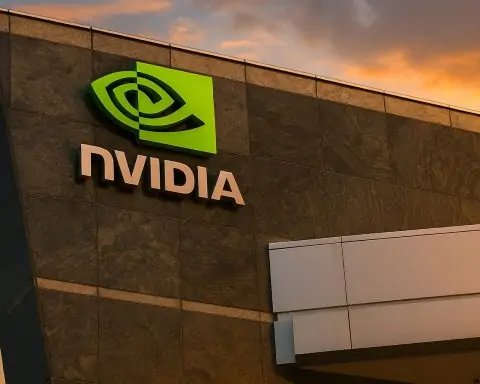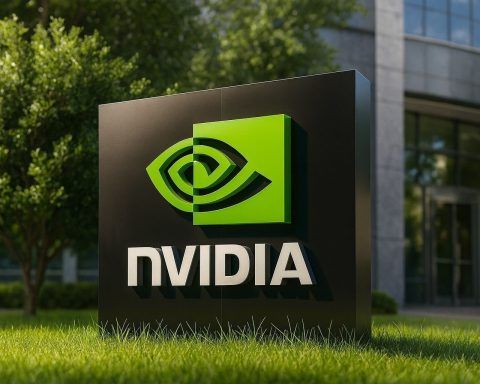- Record funding: AI startup Reflection AI has raised a staggering $2 billion in new funding led by Nvidia, vaulting its valuation to about $8 billion (up from just ~$545 million in March) [1]. This is one of the largest funding rounds ever for an early-stage AI company, underscoring feverish investor interest in the sector.
- DeepMind alumni founders: Reflection AI was founded in 2024 by ex-Google DeepMind researchers Misha Laskin and Ioannis Antonoglou [2]. The team includes veterans behind breakthrough projects like AlphaGo and ChatGPT, and their mission is to build “superintelligent autonomous systems” – starting with AI that can automate coding tasks for engineers [3] [4].
- Open-source ambitions: The startup is developing an open-source AI model to compete with China’s DeepSeek [5], a Chinese AI lab known for releasing powerful models at low cost. (DeepSeek’s 236-billion-parameter model rivaled GPT-4 Turbo in performance [6] and its open approach even triggered an AI “price war” in China [7].) Reflection AI likewise aims to make advanced AI “accessible to all,” signaling a more open, transparent approach than some Western rivals.
- Nvidia leads investors:Nvidia’s venture arm (NVentures) is leading Reflection’s funding round – reportedly contributing around $250–$500 million itself [8] [9] – as the chip giant doubles down on AI startups that will demand its hardware. Other backers include top VCs like Lightspeed and Sequoia, billionaire Yuri Milner’s DST Global, and even 1789 Capital (an investment fund co-founded by Donald Trump Jr., which invested $100M) [10]. The round was initially targeting $1B [11] but ended up oversubscribed at $2B due to immense investor FOMO.
- Historic AI boom (and bubble fears): This massive deal is the latest sign of red-hot investor enthusiasm for AI – over half of all venture capital in early 2025 went into AI startups [12]. Even OpenAI raised an unprecedented $40B earlier this year [13]. Tech leaders are likening today’s AI talent race to professional sports contracts [14]. However, some experts warn of a “hype bubble” as early-stage AI firms with little revenue command breathtaking valuations [15] [16]. Sovereign fund investor Bryan Yeo notes “any startup with an AI label will be valued right up there at huge multiples…that might be fair for some and probably not for others.” [17]
Reflection AI’s $2B Funding Frenzy
It’s official: Reflection AI has secured one of the largest funding rounds ever for a young tech startup – $2 billion in fresh capital led by Nvidia [18]. The New York Times first reported the blockbuster raise, valuing the one-year-old company at roughly $8 billion [19]. To put that in perspective, Reflection was valued at only ~$545 million as recently as March [20]. In other words, its paper valuation has leapt nearly 15× in just six months, a virtually unheard-of jump. The NYT called this “the latest sign of investor fervor” around AI, even as some worry the boom may be overheating [21].
The sheer size of the round has stunned market watchers. A $2B financing is more typical of a late-stage unicorn or an IPO – yet Reflection AI is still an early-stage company without significant revenue. This comes on the heels of a similar shock in mid-2025 when former OpenAI CTO Mira Murati’s new startup Thinking Machines Lab also raised $2B at a $12B valuation with no product on the market [22]. Such outsized deals illustrate how capital is flooding into AI ventures in 2025 at record levels. In fact, AI startups attracted $73.1B globally in Q1 2025 alone (58% of all VC funding) [23] – a venture capital arms race driven by the promise of transformative AI.
In Reflection’s case, the company initially aimed to raise around $1 billion at a $4.5–5.5B valuation [24] [25] (per a September Financial Times report). But investor demand was so intense that the round swelled to $2B – doubling the target – and pushed the valuation to roughly $8B [26]. Nvidia stepped up as the lead investor, and the roster of backers reads like a who’s who of tech finance: Lightspeed Venture Partners, Sequoia Capital, and DST Global were already on board [27]. Notably, 1789 Capital – a fund co-founded by Donald Trump Jr. – joined the round with a $100M stake, alongside Nvidia’s huge check [28]. Such an eclectic mix of VCs, corporate investors, and even political family money underscores the hype and strategic importance attached to AI startups like Reflection.
For Nvidia, this is more than just a financial bet – it’s strategic. The GPU maker has positioned itself at the center of the AI gold rush, supplying the chips that train advanced models, and now buying stakes in promising AI labs. Nvidia’s NVentures arm reportedly put in at least $250M (and possibly up to $500M) of the round [29] [30]. The deal gives Nvidia a foothold in Reflection’s technology, and practically guarantees that Reflection will purchase large amounts of Nvidia hardware to build and run its AI systems. In effect, Nvidia is both fueling and feeding off the AI startup boom – a strategy that extends to other deals (for example, Nvidia recently agreed to invest as much as $100B in OpenAI alongside chip supply agreements [31]). This symbiosis sent Nvidia’s own stock (NVDA) to new heights in 2025, hitting all-time highs around ~$184 per share in late September [32] and still hovering near record levels as of early October. Nvidia shares have outperformed the market by a wide margin this year, up ~30% year-to-date, largely thanks to investor optimism about AI demand [33].
DeepMind Alumni Building an Open-Source AI Challenger
So what exactly is Reflection AI, and why has it garnered such investor fanaticism? In short, Reflection AI is a one-year-old startup with a moonshot mission: to develop “frontier” AI systems that are both super intelligent and openly accessible. The company’s founders have serious AI pedigree. Misha Laskin (CEO) and Ioannis Antonoglou (CTO) are both alumni of Google DeepMind, the famed AI research lab [34]. Antonoglou in fact was a founding engineer at DeepMind and worked on the team that created AlphaGo, the first AI to beat the world champion of Go [35]. That achievement in 2016 – a pivotal moment in AI history – inspired the vision behind Reflection. “It was the first time we internalized what superintelligence would feel like,” the team wrote [36].
Reflection’s core belief is that achieving true “AGI” (artificial general intelligence) will require AI agents that can teach themselves and improve iteratively by performing complex tasks autonomously [37] [38]. As a practical first step, Reflection is tackling autonomous coding – essentially, AI that can understand, navigate, and even write software code with minimal human help. “We believe solving autonomous coding will enable superintelligence more broadly,” the founders explain [39]. If you can build an AI that learns to write its own software (fixing bugs, adding features, optimizing performance), you’ve not only automated a valuable task – you’ve also created a system that can continuously improve itself, moving closer to open-ended intelligence.
The company’s initial product, Asimov, is a reflection of this philosophy. Rather than a ChatGPT-style bot that generates code from scratch, Asimov is described as a “code research agent” that helps human engineers comprehend large codebases and troubleshoot [40] [41]. It indexes entire repositories, documentation, chat logs, issue trackers and more, then answers natural-language questions about the code with cited sources [42] [43]. For example, an engineer could ask “How does our login authentication flow work?” and Asimov will produce an explanation with line-by-line references to the relevant code and design docs [44]. In essence, Reflection is building an AI assistant that reads code so you don’t have to, addressing the fact that developers spend ~70% of their time understanding existing code vs. writing new code [45].
This may sound less flashy than a system that magically writes entire programs, but it fills a real pain point in enterprise software teams – and it plays to Reflection’s strength in large language models with enormous context windows [46]. Asimov uses extremely large context (potentially hundreds of thousands of tokens) to consider all relevant project information when answering a query, rather than retrieving only small snippets [47]. The agent also learns from user feedback over time, refining its answers as it’s corrected, which aligns with Reflection’s focus on reinforcement learning (RL) for continuous improvement [48].
Beyond the product, what really sets Reflection apart is its commitment to an open, accessible AI ecosystem. The startup’s motto is about building “open intelligence accessible to all,” and it is reportedly creating an open-source foundation model as the engine of its AI [49]. In practice, this could mean Reflection eventually releases a powerful large language model (LLM) to the public or open-sources key components of its tech. This stance has drawn comparisons to DeepSeek AI, a Chinese AI lab that similarly emphasizes openness. DeepSeek, founded in 2023 in Hangzhou, gained fame for openly releasing advanced AI models and undercutting competitors on price [50]. By mid-2024, DeepSeek’s flagship 236-billion-parameter model (DeepSeek-V2) was ranking among the top global benchmarks and “rivaling GPT-4 Turbo” in capability – yet was made freely accessible, forcing rivals in China to slash their API prices [51] [52].
Reflection AI appears to be positioning itself as the Western answer to DeepSeek [53] – combining elite talent from DeepMind/OpenAI with an open ethos to challenge both the tech giants and the well-funded Chinese players in the AI race. Co-founder Laskin has noted that real-world feedback and broad deployment are crucial to refining AI systems [54], which aligns with releasing tools widely rather than keeping models proprietary. This approach likely appealed to certain investors (e.g. open-source advocates and those worried about a single company dominating AI). It may also explain why Nvidia and others are keen to back Reflection: an open model that anyone can build on could drive even more demand for AI chips, and ensure U.S. leadership in AI development remains strong vis-à-vis China. (It’s worth noting that 1789 Capital’s involvement hints at geopolitical motivations as well – the fund’s partners have signaled interest in bolstering American tech competitiveness against Chinese advances.)
Nvidia’s Strategic Stake and Investor Lineup
The headline of this funding round is undoubtedly Nvidia’s massive bet on Reflection AI. Nvidia Corporation, the $1.2 trillion semiconductor behemoth, isn’t just passively profiting from the AI boom by selling GPUs – it is actively investing in the AI startups that are poised to shape the future of the field. With Reflection, Nvidia secured a lead role in the round (through its NVentures arm) and reportedly contributed between $250M and $500M of the $2B total [55]. In previous reporting, insiders said Nvidia would invest “at least $250 million” [56], but Bloomberg later indicated Nvidia upsized that to $500M as it took charge of the deal [57]. This likely made Nvidia the single biggest outside shareholder in Reflection AI after the round.
Why is Nvidia so interested in a startup building AI coding tools? One reason is strategic supply and demand: Reflection’s ambitions will require enormous computational power – training frontier models, indexing entire codebases with huge context windows, hosting on-premise appliances for enterprise clients, etc. All of that translates to purchasing thousands of high-end Nvidia GPUs. By investing early, Nvidia both boosts the startup’s ability to afford more hardware and gains insight (and some influence) into its computing needs. It’s a symbiotic relationship that Nvidia has replicated across the industry. In fact, Nvidia’s CEO Jensen Huang has openly described a strategy of “cupping the GPU demand curve” – essentially financing AI customers (via investments or favorable credit terms) so they can buy more Nvidia chips [58] [59]. We saw this in Nvidia’s partnership with OpenAI (a multi-billion commitment to supply hardware and even invest directly in OpenAI’s expansion) [60]. Backing Reflection AI is in line with that playbook.
Another reason is that Reflection’s focus (autonomous coding agents) complements Nvidia’s broader AI ecosystem push. Nvidia wants to be central not just in model training but also in end-use applications of AI across industries. Developer tools and enterprise software automation are huge markets. By aligning with Reflection, Nvidia can help shape an AI solution for software development that, if successful, could be deployed in many of its enterprise customers. It’s a bit reminiscent of how Microsoft invested in OpenAI to ensure its Azure cloud would power advanced AI services; here Nvidia invests to ensure its chips underpin a new class of AI coding assistants in the data center.
Beyond Nvidia, the syndicate of investors in this $2B round is noteworthy. Lightspeed Venture Partners and Sequoia Capital, two top-tier Silicon Valley VC firms, had already led Reflection’s earlier $130M funding in March [61] and doubled down in the new raise [62]. They bring deep enterprise and AI expertise (both were early backers of companies like Snowflake, NVIDIA itself, OpenAI’s antecedents, etc.). DST Global, the fund helmed by Yuri Milner (known for big bets on Facebook, Alibaba, etc.), also joined in [63] – DST often writes large checks for later-stage growth rounds in disruptive tech, so its participation signals conviction that Reflection could be a long-term winner in AI.
However, perhaps the most eye-catching participant is 1789 Capital. This relatively new fund is run by a group including Donald Trump Jr. and tech investor Theo Wold, among others. 1789 Capital has pitched itself as supporting projects that bolster American technological leadership and “freedom” in tech. According to Bloomberg’s scoop, 1789 put in $100 million alongside Nvidia [64]. For a fund tied to political figures to invest such a sum in a year-old AI startup is highly unusual – and highlights how AI supremacy has become a geopolitical concern. The presence of 1789 suggests that some U.S. investors see Reflection as strategically important in the context of U.S.–China tech competition (given Reflection’s open-source stance directly challenges China’s DeepSeek). It’s also a sign that fear of missing out on the next AI giant spans all corners of the investor community, from traditional VCs to sovereign wealth funds to political family offices.
Rounding out the cap table, Reflection’s earlier seed included not only institutional VCs but also prominent angels and industry figures. PitchBook data (via Sacra) shows investors like Reid Hoffman (LinkedIn co-founder, early OpenAI investor) and Alexandr Wang (CEO of Scale AI) participated in Reflection’s Series A [65]. Their involvement likely provided valuable networks and validation. With the new $2B infusion, Reflection AI is now extremely well-capitalized – having raised roughly $1.13B in total primary funding to date [66] (not counting the valuation uplift). This war chest gives the company a runway to aggressively hire talent, build out infrastructure, and iterate on its AI models without revenue pressure in the short term.
Racing Against DeepSeek and Global Rivals
Reflection AI’s meteoric rise is occurring in the context of a broader global AI arms race – one that spans startups, tech giants, and nation states. A key narrative around Reflection is that it is squaring off (indirectly) with DeepSeek AI, the Chinese startup that has taken an early lead in open-source foundation models. While Reflection is based in New York and still developing its first large-scale model, DeepSeek has been releasing giant AI models for two years now – backed by massive GPU supercomputers that a Chinese hedge fund (High-Flyer) built for it [67] [68]. DeepSeek’s strategy of open-sourcing high-performance models (and effectively giving them away for free) has drawn attention in the West as a potential threat to the dominance of closed models from OpenAI, Google, etc. By June 2024, DeepSeek’s 236B-parameter model was ranked among the top 3 on a key AI benchmark (AlignBench) and “reportedly surpassing GPT-4 Turbo” on certain tasks [69] – all while running at a fraction of the cost. When DeepSeek made that model freely available, it forced competitors in China (like Baidu) to slash their AI service prices [70]. In essence, DeepSeek demonstrated that open, low-cost AI at scale is possible and can disrupt incumbents.
Now Reflection AI aims to follow a similar path – but perhaps go even further by combining open access with cutting-edge research and real enterprise use cases in the West. If Reflection succeeds in developing an open-source model on par with the best from OpenAI or Anthropic, it could fundamentally alter the competitive landscape. Big Tech companies have largely kept their most advanced models proprietary (e.g. OpenAI’s GPT-4, Google’s Gemini, etc.), which in turn has led to a vibrant open-source movement (Meta’s LLaMA models, various community-driven models). Reflection’s arrival with billions in backing may supercharge the open-source camp with resources on par with a top corporate lab.
It’s telling that Nvidia is backing both sides: it invests in OpenAI (proprietary) and in Reflection AI (open), as well as reportedly in other efforts (the Financial Times noted Nvidia and others also put $150M into SandboxAQ, a Google-spinout working on AI + quantum tech, valuing it at $5.75B [71]). This hedging ensures Nvidia wins regardless of which AI paradigm prevails. For Reflection, though, the competition is fierce and multi-front:
- Versus Big Tech: Companies like OpenAI, Anthropic, Google DeepMind, and Meta are all racing to build more powerful AI models. OpenAI is working on GPT-5, Anthropic on Claude Next, Google on Gemini – each with multi-billion funding from their parent companies or investors. Reflection is a startup, but thanks to this new funding it now has a warchest comparable to these players (OpenAI’s recent reported $40B raise notwithstanding [72]). Reflection will need to attract top talent and carve out a niche (such as developer tools) to avoid direct head-on collisions at first. Notably, Meta has been aggressively hiring AI researchers – offering compensation packages “rivaling those of professional athletes” to lure people like Laskin and Antonoglou [73]. Reflection managed to recruit its founders away from big firms; the question is whether it can retain and expand a team in the face of such bidding wars.
- Versus other startups: Reflection isn’t the only startup to raise big money for AI agents or coding AI. Apart from Murati’s Thinking Machines Lab ($2B round) [74], there are others (on a smaller scale) like Replit’s Ghostwriter, Sourcegraph’s Cody, and various code-focused AI tools. Many dev tool companies are adding LLM features. Reflection’s differentiation is its focus on comprehension over generation and its pursuit of fundamental research (RL + LLM for autonomy). But it will have to demonstrate its Asimov agent can outperform simpler solutions (like just using OpenAI’s Codex or GPT-4 with vector search on code) in order to win customers in the near term.
- China and geopolitical factors: As mentioned, DeepSeek is a key rival conceptually. The Chinese ecosystem also has players like Baidu (ERNIE bots), Alibaba, and Huawei developing advanced models. U.S. export controls on chips have tried to slow China’s progress, but labs like DeepSeek benefited from large GPU stockpiles and are now reportedly exploring completely domestic AI chip alternatives. Reflection being flush with capital means it can purchase all the Nvidia H100 GPUs it needs – something DeepSeek might struggle with if U.S. sanctions tighten. In a way, Reflection’s success is likely part of a broader narrative of the U.S. trying to maintain an edge in AI. It’s not surprising that at the same time Reflection is rising, the U.S. government is also investing in AI (e.g. the Dept. of Energy recently announced plans to build AI research data centers on federal sites [75]). The AI race is not just corporate – it’s strategic, and Reflection now finds itself on the front lines of this race as an “open” champion on the U.S. side.
Is the AI Investment Boom Overheating?
The jaw-dropping valuations and pile-on of investors in deals like Reflection AI inevitably raise the question: are we in an AI bubble? The numbers are reminiscent of the dot-com era: startups barely a year old commanding billion-dollar valuations per employee, venture capitalists fighting to throw money at anything with “AI” in its pitch, and huge paper valuations despite minimal revenue. Some industry leaders and investors have started voicing caution even as they participate in the frenzy.
For instance, Amazon founder Jeff Bezos recently remarked that the current AI boom “shows classic bubble signs” – though he believes the ultimate benefits of AI will still be “gigantic” in the long run (i.e. a bubble that eventually leads to real value, much like the internet) [76]. Sam Altman of OpenAI has also acknowledged there is likely an “AI bubble” in terms of excitement and funding, even as he contends AI’s importance justifies the enthusiasm [77].
More concretely, some major investors are alarmed by valuation metrics in the private AI market. Bryan Yeo, chief investment officer at Singapore’s $700B sovereign fund GIC, observed this month that “there’s a little bit of a hype bubble going on in early-stage venture [AI]” [78]. He noted that essentially “any company startup with an AI label will be valued right up there at huge multiples…That might be fair for some companies and probably not for others.” [79] His point is that investors are often pricing every AI startup as if it will be a big winner, when logically many will fail or settle into niche outcomes.
The data supports his caution: in Q1 2025, 57.9% of all venture capital dollars globally went into AI [80]. That kind of concentration in one sector is unprecedented. It suggests a possibly overheated situation where other areas are being neglected and AI hype has reached a fever pitch. In the same panel, Todd Sisitsky, president of private equity giant TPG, said the fear of missing out (FOMO) among investors is “dangerous” and pointed out that some early-stage AI ventures are being valued at $400M to $1.2B per employee – calling that “breathtaking.” [81] In Reflection’s case, with maybe ~50 employees, a $8B valuation implies over $150M per employee – fitting that “breathtaking” category. Such ratios harken back to 1999’s dot-com mania.
So far, the counter-argument from AI optimists is that this time may be different: AI truly has the potential to transform every industry, and whichever companies emerge as the leaders in creating or applying advanced AI could justify enormous valuations (just as Amazon, Google, etc. eventually did after the dot-com bust). From that perspective, investors say it’s rational to pour money into promising AI projects early, even at high valuations – because the upside of backing a winner could be almost unbounded. For example, if Reflection AI’s technology eventually helps birth a form of artificial general intelligence, the economic value of that would be enormous (trillions by some estimates). And in the nearer term, if Reflection captures a new market (AI-assisted software development tools) that every large enterprise adopts, it could generate hundreds of millions in annual revenue, potentially justifying an $8B valuation.
There’s also a sense that winners in AI might take all (due to network effects, data advantages, etc.), so investors would rather pay up now than miss out entirely. This winner-takes-all mindset fuels the FOMO. Ironically, it can become self-fulfilling: Reflection now has $2B to spend, which likely puts it in a better position to become a “winner” by out-investing smaller rivals, hiring top talent, and staying at the cutting edge. In other words, massive funding can in theory buy a competitive advantage in a field like AI model development, where compute resources and talent are critical.
However, history warns that not all lavishly funded startups succeed. Some will flame out if the technology doesn’t progress as fast as hoped or if they can’t find a sustainable business model. Reflection AI will face pressure to deliver results commensurate with its valuation. The company is targeting enterprise software teams with its Asimov agent, which suggests it will need to convince large organizations to adopt and pay for its product. Enterprise sales cycles can be slow, and big companies may also wait to see if free/open alternatives (perhaps powered by Meta’s open models or others) suffice. If Reflection’s revenue in a couple of years is only, say, $50M annually, a $8B valuation would look very steep – potentially forcing a down-round or painful adjustments.
For now though, the AI funding faucet remains wide open. As long as global interest rates are reasonable and big success stories keep emerging (e.g. OpenAI’s ChatGPT scaling to millions of users, Nvidia’s profits booming thanks to AI, etc.), investors appear willing to tolerate sky-high multiples on the belief that we’re in the early innings of a decades-long AI revolution. The presence of sovereign wealth funds and big corporates in these rounds (who generally have longer investment horizons) may also provide more patience. GIC’s Yeo did add that views are divided on whether it’s truly a bubble or just a justified boom [82] – implying that some think this “boom” may actually be rational, given AI’s promise.
Outlook: What’s Next for Reflection AI and the Industry
With $2 billion in fresh cash, Reflection AI now has the resources to aggressively pursue its vision. In the near term, the company will likely scale up hiring – competing with tech giants for the best AI researchers and engineers. (It wouldn’t be surprising if some of those Meta-offered “athlete” salaries have to be matched or exceeded to lure talent to Reflection now!) The company will also invest heavily in compute infrastructure – i.e. buying or leasing clouds of Nvidia GPUs. This will be crucial for training any new open-source models that Reflection plans to develop. Rumor has it that Reflection might be working on a large language model tailored for code and reasoning, as a foundation for its agents. Given the open-source intention, we might see Reflection release a model or research paper in the coming year that demonstrates something novel in autonomous coding or RL-assisted reasoning.
On the product side, Reflection will aim to expand trials of Asimov with enterprise partners and convert those into paying customers. According to insiders, Reflection’s go-to-market is via design partnerships with big engineering organizations [83]. They likely have a few Fortune 500 companies already piloting Asimov in stealth. If those continue to show success (e.g. faster onboarding of new developers, fewer bugs due to better code understanding, etc.), Reflection can turn them into case studies and formally launch Asimov as a commercial product. The business model is enterprise SaaS – reportedly charging $15k–$25k per user per year for access to the platform [84]. At those prices, even a dozen large customers could yield significant revenue. The self-hosted deployment model (running in the customer’s cloud for data privacy) is an attractive feature for many companies that worry about sending code to external services [85] [86].
If Asimov gains traction, Reflection AI could evolve from a pure R&D lab into a revenue-generating enterprise software firm and a cutting-edge AI research outfit simultaneously. Balancing those two will be tricky – they’ll need to keep pushing the envelope in AI (to fulfill the “path to superintelligence” vision) while also solving pragmatic issues for enterprise users. This dual identity is reminiscent of OpenAI’s challenge (research vs. commercial clients) or DeepMind’s before it was folded more into Google. The $2B funding gives Reflection some cushion to not rush monetization too hard, but ultimately investors will want to see a path to returns.
Market competition will also intensify. One potential scenario: Big cloud providers or dev tool companies might respond to Reflection’s rise by enhancing their own offerings. For instance, Microsoft (with GitHub Copilot) or Amazon could integrate deeper codebase Q&A features, perhaps even partnering with or licensing from Reflection if not building in-house. It’s also possible a giant like Microsoft could attempt to acquire Reflection AI down the line (though at $8B valuation now, any acquisition would have to be at a hefty premium – not impossible for cash-rich suitors, but Reflection’s investors likely see it becoming an independent major player).
From an industry perspective, Reflection’s success or failure will be an interesting litmus test for the AI boom. If it rapidly delivers a breakthrough product and perhaps even moves toward an IPO in a couple years, it will validate all the exuberance. If it stumbles, it would be a cautionary tale. The same goes for similar big-funded startups: e.g. if Murati’s Thinking Machines or others justify their $10B+ valuations with tangible progress, the boom sustains; if not, we could see a shake-out.
One thing is for sure: the AI landscape in late 2025 is extraordinarily dynamic. New alliances (like Reflection + Nvidia + 1789) and rivalries (Reflection vs DeepSeek, vs closed models) are forming almost monthly. Governments are paying attention too – from White House AI executive orders to China’s AI regulations – because these technologies are deemed critical. In this environment, a nimble, well-funded startup like Reflection AI has a real shot at influencing the direction of AI’s future, provided it can execute on its grand vision.
In the immediate future, observers will be watching for any announcements from Reflection AI – perhaps open-sourcing some of its work or publishing research that demonstrates its capabilities. The company already made a splash in July by launching Asimov (its code agent) and highlighting how it can index and cite from an entire company’s code knowledge [87]. With the new funding, we might see Asimov’s public debut or a beta program open up. Likewise, keep an eye on Nvidia’s statements – Nvidia might reference Reflection as an example of AI driving compute demand in its next earnings, which would signal how heavy Reflection’s GPU usage is expected to be.
For investors and tech enthusiasts, Reflection AI’s rise is a thrilling development. It combines some of the most exciting threads in tech today: open-source vs. proprietary AI, the automation of programming, East vs. West AI competition, and the extremes of venture investing. As one sovereign wealth fund manager put it, parts of this trend feel like a bubble, “but the technology is real” [88]. In other words, there may be froth, but underneath it the AI revolution marches on. Reflection AI now has a prominent place in that revolution – and a $2 billion vote of confidence that it could shape the next era of computing.
Sources: The New York Times via Techmeme [89] [90]; Reuters [91] [92]; Bloomberg Law [93]; Tech Space 2.0 (TS2) [94] [95]; Radical Data Science [96] [97]; Sacra analysis [98] [99]; Reuters analysis and data [100] [101]; Nvidia stock and market news [102].
References
1. www.techmeme.com, 2. www.reuters.com, 3. www.reuters.com, 4. reflection.ai, 5. www.techmeme.com, 6. ts2.tech, 7. ts2.tech, 8. news.bloomberglaw.com, 9. sacra.com, 10. news.bloomberglaw.com, 11. ts2.tech, 12. www.reuters.com, 13. www.reuters.com, 14. www.reuters.com, 15. www.techmeme.com, 16. www.reuters.com, 17. www.reuters.com, 18. www.techmeme.com, 19. www.techmeme.com, 20. www.techmeme.com, 21. www.techmeme.com, 22. radicaldatascience.wordpress.com, 23. www.reuters.com, 24. sacra.com, 25. sacra.com, 26. www.techmeme.com, 27. sacra.com, 28. news.bloomberglaw.com, 29. news.bloomberglaw.com, 30. sacra.com, 31. ts2.tech, 32. ts2.tech, 33. ts2.tech, 34. www.reuters.com, 35. reflection.ai, 36. reflection.ai, 37. reflection.ai, 38. reflection.ai, 39. reflection.ai, 40. sacra.com, 41. sacra.com, 42. sacra.com, 43. sacra.com, 44. sacra.com, 45. sacra.com, 46. sacra.com, 47. sacra.com, 48. reflection.ai, 49. www.techmeme.com, 50. ts2.tech, 51. ts2.tech, 52. ts2.tech, 53. www.techmeme.com, 54. reflection.ai, 55. news.bloomberglaw.com, 56. sacra.com, 57. news.bloomberglaw.com, 58. ts2.tech, 59. ts2.tech, 60. ts2.tech, 61. sacra.com, 62. sacra.com, 63. sacra.com, 64. news.bloomberglaw.com, 65. sacra.com, 66. sacra.com, 67. ts2.tech, 68. ts2.tech, 69. ts2.tech, 70. ts2.tech, 71. ts2.tech, 72. www.reuters.com, 73. www.reuters.com, 74. radicaldatascience.wordpress.com, 75. ts2.tech, 76. www.businessinsider.com, 77. m.economictimes.com, 78. www.reuters.com, 79. www.reuters.com, 80. www.reuters.com, 81. www.reuters.com, 82. www.reuters.com, 83. sacra.com, 84. sacra.com, 85. sacra.com, 86. sacra.com, 87. radicaldatascience.wordpress.com, 88. www.businessinsider.com, 89. www.techmeme.com, 90. www.techmeme.com, 91. www.reuters.com, 92. www.reuters.com, 93. news.bloomberglaw.com, 94. ts2.tech, 95. ts2.tech, 96. radicaldatascience.wordpress.com, 97. radicaldatascience.wordpress.com, 98. sacra.com, 99. sacra.com, 100. www.reuters.com, 101. www.reuters.com, 102. ts2.tech










